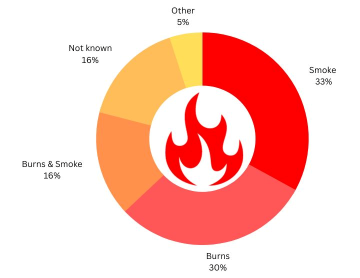
Smoke is the major cause of deaths during fires
- Smoke can impair the respiratory system and reduce the oxygen supply to vital organs.
- Smoke inhalation can lead to asphyxiation, carbon monoxide poisoning, thermal injury, and chemical irritation.
- Smoke can also impair vision and cause confusion, making it harder to escape from a burning building.
- Smoke can travel faster and farther than flames, and can fill up spaces that are not directly affected by fire. Therefore, it is important to avoid exposure to smoke and seek fresh air as soon as possible in case of a fire.
Legal reasons why smoke needs to be controlled as specified in The Building Regulations 2010
Requirement
Means of warning and escape
B1. Building design and construction must include adequate measures for fire detection and evacuation. The building must have suitable escape routes that lead to a safe location outside the building and that can be used reliably and efficiently at any time.
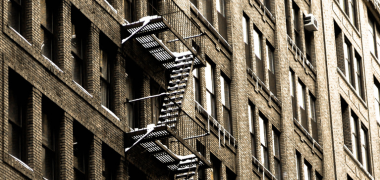
Requirement
Access and facilities for the fire service
B5. The building shall be designed and constructed so as to provide reasonable facilities to assist fire fighters in the protection of life.
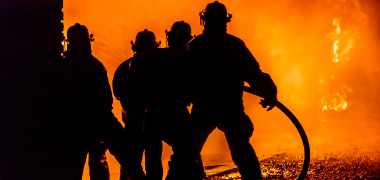
What are the different types of Ventilation systems?
Natural Smoke Ventilation
In the event of a fire, any vents of the natural venting systems open , these systems are designed and calculated by using natural airflow dynamics to remove smoke. This can be attained by opening windows or vents. The sizes of these vents depend on the location of them but typically range from 1m2 to 1.5m2 of free air needed.
Natural Smoke Ventilation is the cheapest method of meeting the requirements of Approved Document B, and most common based on new building design as architects generally try to design the less complex buildings within these parameters. In the event of a fire, smoke detectors will activate the natural smoke venting system within that particular zone, usually per floor. This creates a natural airflow to allow the hot smoke from the building and expel it into the atmosphere, offering a safe means of escape for occupants, with greater visibility and access for firefighters.
Natural Smoke Ventilation
In the event of a fire, any vents of the natural venting systems open , these systems are designed and calculated by using natural airflow dynamics to remove smoke. This can be attained by opening windows or vents. The sizes of these vents depend on the location of them but typically range from 1m2 to 1.5m2 of free air needed.
Natural Smoke Ventilation is the cheapest method of meeting the requirements of Approved Document B, and most common based on new building design as architects generally try to design the less complex buildings within these parameters. In the event of a fire, smoke detectors will activate the natural smoke venting system within that particular zone, usually per floor. This creates a natural airflow to allow the hot smoke from the building and expel it into the atmosphere, offering a safe means of escape for occupants, with greater visibility and access for firefighters.
Smoke & Heat Exhaust Ventilation Systems (SHEVS)
Smoke and Heat Ventilation Systems (SHEVS) are designed primarily to remove smoke and heat from a burning building, maintaining escape routes and allowing clear fire fighting access. A SHEV system increases the escape time for buildings occupants.
On detection of smoke the AOV’s, louvres on smoke shafts, Automatic Opening Windows (AOW) or doors via actuators will automatically open. With manual call points or Fire fighters override switches generally located close to the zone activating. The system design for control panels differs depending on the building design etc… They can have either local slave panels linked to a master panel or have one central control panel, all panels have battery back in the event of power failure. The timing for opening all the vents is of great importance in order to enable people to escape quickly. Therefore, the use of an automated SHEV system is to be highly recommended.
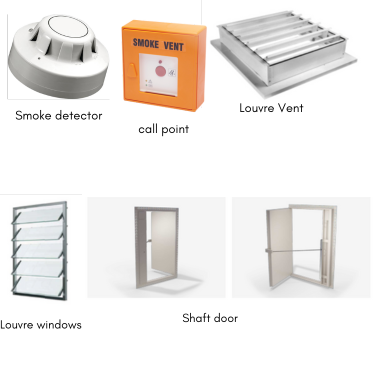
Mechanical Smoke Ventilation Systems
Mechanical Smoke Ventilation systems are designed to keep escape and access routes free from smoke and to facilitate fire-fighting operations. They are primarily used for buildings with extended corridors and to protect exit staircases such as:
- Larger residential buildings
- Large office buildings
- Exhibition halls
- Mixed-use buildings
- Basements & Car Parks
The systems are similar to natural ventilation systems but use powered elements such as fans to force the movement of smoke to allow it to escape through dampers, grilles and vents. Mechanical systems are useful where natural airflow is insufficient or impracticable, usually for carparks or within a pre existing building where a natural design will not work.
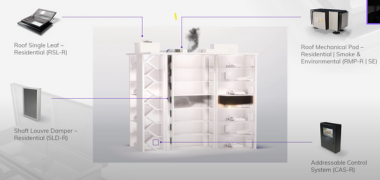
Process
- The Fire alarm is sounded and residents evacuate their apartments
- The fire damper will open into the smoke shaft, other dampers are then “locked out” to ensure they stay closed.
- The duty fan will operate to draw smoke through the damper and up the shaft (if this fan fails, an automatic transfer switch will operate the standby fan).
- Pressure causes the stairway fire door to open.
- Inlet air is provided by opening a head of stairs Natural Heat Smoke Exhaust Ventilator (NSHEV).
- Fresh air is drawn through the staircase and door into the protected lobby.
- This keeps the staircase free of smoke to allow safe escape for residents and safe access for firefighters. The basic principle of operation is similar for different building configurations, control of the system is adaptable to meet the architects design.

Pressurisation Smoke Ventilation Systems
Pressurisation Smoke Ventilation systems are designed to increase the air pressure in the protected zone
relative to the fire zone creating a pressure differential in single stair buildings. There are three places
which would be considered a protected zone, a staircase a fire fighting lift and a fire fighting lobby. These systems are mainly used in public and commercial buildings and proposals are coming in to incorporate these into 18m+ single stair residential buildings.
Pressurisation systems
- A solution aimed at provided a system for buildings outside the scope of
- Natural and Mechanical Smoke Ventilation systems
- The air pressure in protected zone or staircase is raised above the fire zone
- Inlet fans pump air into the protected zone via shafts or ducts
- The can provide a high level of protection to stairs
- Requires an air release path, which is not normally acceptable within a resident's apartment due to maintenance requirements
- When the designer of the building is unable to comply with Approved Document B in full and an alternative fire safety engineered approach needs to be adopted. This solution should adopt the functional requirements set out in the approved document wherever appropriate.
This solution is the most expensive and takes up more space than the other 2 systems and is normally only installed if it has been requested by the fire department.
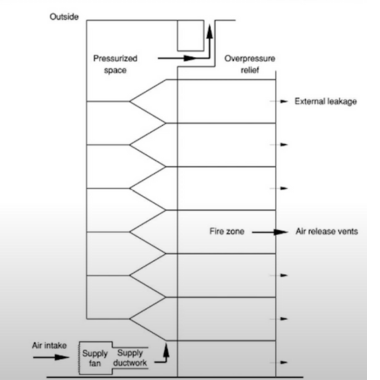
If you are unsure when your system was last inspected please contact us now and we can send our AOV specialist consultant to advise you.